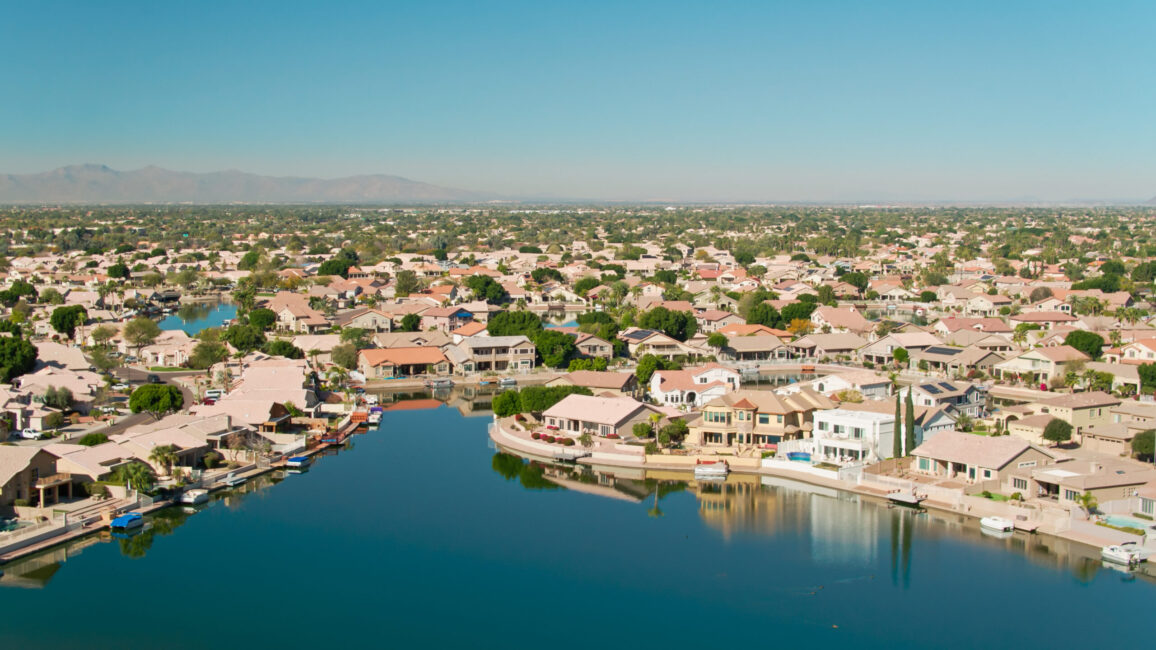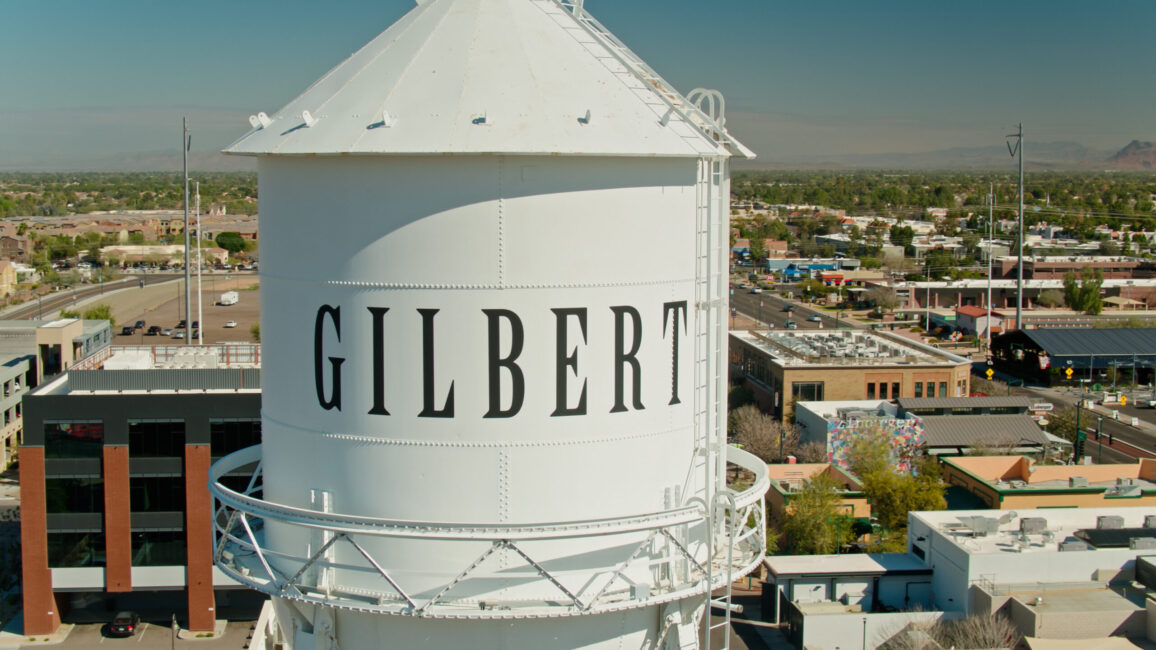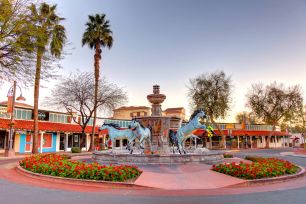Walking the streets of Phoenix can feel like navigating a maze of speeding cars, especially during rush hour when temperatures soar and everyone’s eager to reach their air-conditioned destination. With over 1.6 million residents and countless visitors exploring the Valley, pedestrian safety has become a critical concern that affects us all.
Unfortunately, not every driver recognizes the responsibility that comes with operating a vehicle around pedestrians. When drivers fail to yield the right of way, the consequences can be devastating. Understanding your rights as a pedestrian and knowing what legal options are available when those rights are violated can make all the difference in protecting yourself and your family.
The Reality of Pedestrian Accidents in Phoenix
Phoenix consistently ranks among the most dangerous cities for pedestrians in the United States. The combination of wide roads designed for high-speed travel, intense desert heat that limits walking times, and rapid urban development creates a perfect storm for pedestrian-vehicle conflicts.
Recent statistics paint a sobering picture. Arizona regularly appears in the top ten states for pedestrian fatalities, with Maricopa County accounting for a significant portion of these tragic incidents. The numbers aren’t just statistics – they represent real people whose lives were forever changed by a moment of driver negligence.
What makes these accidents particularly heartbreaking is that many are entirely preventable. Most pedestrian accidents occur not because of complex traffic situations, but due to simple failures: drivers not checking crosswalks before turning, speeding through residential areas, or simply not paying attention to their surroundings.
Understanding Arizona’s Pedestrian Laws
Arizona law provides clear protections for pedestrians, but understanding these rights requires looking beyond the basic “pedestrians have the right of way” concept that many people remember from driver’s education.
Under Arizona Revised Statutes, pedestrians have the right of way when crossing streets at marked crosswalks and at intersections, even when crosswalks aren’t painted on the pavement. This means that at every corner where two streets meet, pedestrians legally have the right to cross, and drivers must yield.
However, the law also places certain responsibilities on pedestrians. When crossing outside of designated crosswalks or intersections, pedestrians must yield to vehicles. This doesn’t mean drivers can ignore pedestrians in these situations – all drivers have a fundamental duty to exercise reasonable care to avoid hitting pedestrians regardless of who technically has the right of way.
The concept of “reasonable care” is crucial here. Even if a pedestrian is jaywalking or crossing against a signal, drivers who see pedestrians in the roadway must take steps to avoid a collision if reasonably possible. This legal principle recognizes that the consequences of vehicle-pedestrian collisions are so severe that everyone shares responsibility for preventing them.
Arizona also has specific laws regarding school zones, residential areas, and parking lots. In school zones, drivers must exercise extra caution and reduced speeds, particularly during designated school hours. Residential areas often have lower speed limits specifically to protect pedestrians, including children who may enter the roadway unexpectedly.
Common Scenarios Where Drivers Fail to Yield
Understanding when and where pedestrian accidents commonly occur can help both pedestrians and drivers recognize dangerous situations before they become tragic ones.
Right Turn on Red Situations
One of the most frequent scenarios involves drivers making right turns on red lights. While Arizona law permits right turns on red after coming to a complete stop, many drivers roll through these turns while focusing only on vehicle traffic from the left. Pedestrians crossing with the walk signal from the right side become virtually invisible to these drivers.
The law requires drivers to come to a complete stop and check for pedestrians before proceeding with a right turn on red. Failure to do so represents a clear violation of pedestrian right-of-way laws.
Crosswalk Conflicts
Many accidents occur at marked crosswalks, particularly those not located at traffic signals. Arizona law requires drivers to yield to pedestrians in crosswalks, but enforcement can be inconsistent, leading some drivers to believe they can proceed if they don’t see pedestrians directly in their path.
The reality is more complex. Drivers must yield to pedestrians who are in the crosswalk or about to enter the crosswalk on their side of the roadway. This means stopping for pedestrians who are waiting to cross, not just those already in the street.
Parking Lot Incidents
While not technically public roadways, parking lots see numerous pedestrian accidents. Shopping centers, medical facilities, and office complexes create environments where pedestrians and vehicles frequently interact. Many drivers treat parking lots as extensions of public roads, maintaining inappropriate speeds and failing to watch for pedestrians moving between parked cars.
School Zone Violations
Despite enhanced penalties and increased signage, school zones remain dangerous for young pedestrians. Drivers may ignore reduced speed limits or fail to recognize school crossing times, creating situations where children are at risk.
When Drivers Don’t Yield: Your Legal Rights
When a driver fails to yield and causes a pedestrian accident, several legal principles come into play. Understanding these rights can be crucial for anyone who has been injured or family members dealing with a tragic loss.
Negligence Claims
Most pedestrian accident cases fall under negligence law. To establish negligence, injured pedestrians must demonstrate that the driver owed them a duty of care, breached that duty, and caused injuries as a result. In pedestrian cases, this duty of care includes obeying traffic laws, maintaining appropriate speeds, and keeping a proper lookout for pedestrians.
Driver negligence can take many forms: texting while driving, failing to stop at crosswalks, speeding, driving under the influence, or simply not paying attention. Each situation requires careful analysis to determine how the driver’s actions fell below the standard of reasonable care.
Comparative Negligence in Arizona
Arizona follows a “pure comparative negligence” system, which means that even if a pedestrian contributed to their own injury, they may still recover damages. For example, if a pedestrian was jaywalking but a driver was speeding and texting, both parties might share responsibility for the accident.
Under this system, damages are reduced by the percentage of fault assigned to the injured pedestrian. If a pedestrian is found 20% at fault and the driver 80% at fault, the pedestrian can recover 80% of their total damages. This system recognizes that accidents often involve multiple contributing factors.
Types of Damages Available
Pedestrian accident victims may be entitled to several types of compensation. Medical expenses often represent the largest component, including emergency treatment, hospitalization, surgery, rehabilitation, and ongoing medical care. Given the severity of many pedestrian injuries, these costs can easily reach hundreds of thousands of dollars.
Lost wages compensation covers both immediate lost income and reduced future earning capacity. Pedestrian accidents often result in injuries that prevent people from returning to their previous work or require career changes to accommodate physical limitations.
Pain and suffering damages address the non-economic impacts of injuries. These can include physical pain, emotional distress, loss of enjoyment of life, and the psychological trauma that often accompanies serious accidents. While harder to quantify than medical bills, these damages often represent a significant portion of total compensation.
In wrongful death cases, families may recover funeral expenses, lost financial support, and compensation for the loss of companionship and guidance that the deceased would have provided.
Steps to Take After a Pedestrian Accident
The moments immediately following a pedestrian accident can determine both the victim’s medical outcome and the strength of any legal case that follows.
Immediate Medical Attention
Even if injuries seem minor, seeking immediate medical evaluation is crucial. Adrenaline and shock can mask serious injuries, and some conditions like traumatic brain injuries may not show symptoms immediately. Emergency room evaluation creates medical documentation that links injuries directly to the accident.
Documenting the Scene
If physically possible, or through the help of witnesses, documenting the accident scene provides valuable evidence. This includes photographs of vehicle damage, street conditions, traffic signals, signage, and the pedestrian’s injuries. Weather conditions, lighting, and visibility factors should also be noted.
Witness Information
Independent witnesses can provide crucial testimony about how the accident occurred. Their contact information should be collected immediately, as memories fade and people become harder to locate as time passes.
Police Reports
Arizona law requires police reports for accidents involving injuries. These reports provide official documentation of the incident and often include the responding officer’s initial assessment of fault. While not conclusive, police reports carry significant weight in insurance negotiations and legal proceedings.
Preserving Evidence
Physical evidence can disappear quickly. Damaged clothing, shoes, or personal items should be preserved. If the accident involved a crosswalk signal or traffic light, requesting maintenance records for those systems may reveal malfunctions that contributed to the accident.
Working with Insurance Companies
Dealing with insurance companies after a pedestrian accident requires understanding that these companies are businesses focused on minimizing payouts. Even when their insured driver is clearly at fault, insurance adjusters will look for ways to reduce or deny claims.
Common Insurance Company Tactics
Insurance companies often use several strategies to minimize pedestrian accident claims. They may argue that the pedestrian was partially or completely at fault, claim that injuries were pre-existing or unrelated to the accident, or offer quick settlements that are far below the true value of the case.
The Importance of Legal Representation
Having experienced legal representation levels the playing field when dealing with insurance companies. Personal injury attorneys understand insurance company tactics and can effectively counter their strategies. They also have access to medical experts, accident reconstruction specialists, and other professionals who can strengthen a case.
Legal representation is particularly important in pedestrian cases because these accidents often result in serious injuries requiring extensive medical treatment. The full extent of injuries and their long-term impact may not be apparent for months or even years after the accident.
Prevention and Community Responsibility
While understanding legal rights after an accident is important, preventing these tragedies from occurring in the first place should be everyone’s priority. Both drivers and pedestrians share responsibility for creating safer streets.
Driver Education and Awareness
Drivers need regular reminders about pedestrian safety laws and the devastating consequences of pedestrian accidents. This includes understanding right-of-way laws, the importance of checking crosswalks before turning, and maintaining appropriate speeds in areas with pedestrian activity.
Infrastructure Improvements
Phoenix continues to work on infrastructure improvements to enhance pedestrian safety. This includes better lighting at crosswalks, improved signal timing, and the addition of pedestrian-activated signals at key locations. However, these improvements take time and community advocacy to implement.
Community Advocacy
Residents can play a role in improving pedestrian safety by advocating for infrastructure improvements in their neighborhoods, supporting law enforcement initiatives targeting dangerous driving behaviors, and participating in community education programs.
When drivers fail to yield and pedestrian accidents occur, understanding your legal rights becomes essential for protecting your future and holding negligent parties accountable. The complexity of these cases, combined with the serious nature of pedestrian injuries, makes professional legal guidance invaluable for anyone navigating this difficult situation.
Phoenix Accident and Injury Law Firm has extensive experience representing pedestrian accident victims throughout the Valley. The firm’s commitment to fighting for justice and supporting clients through every step of the legal process reflects the serious approach these cases require. If you or a loved one has been injured in a pedestrian accident, understanding your rights and options can make all the difference in your recovery and your future.
Walking the streets of Phoenix can feel like navigating a maze of speeding cars, especially during rush hour when temperatures soar and everyone’s eager to reach their air-conditioned destination. With over 1.6 million residents and countless visitors exploring the Valley, pedestrian safety has become a critical concern that affects us all.
Unfortunately, not every driver recognizes the responsibility that comes with operating a vehicle around pedestrians. When drivers fail to yield the right of way, the consequences can be devastating. Understanding your rights as a pedestrian and knowing what legal options are available when those rights are violated can make all the difference in protecting yourself and your family.
The Reality of Pedestrian Accidents in Phoenix
Phoenix consistently ranks among the most dangerous cities for pedestrians in the United States. The combination of wide roads designed for high-speed travel, intense desert heat that limits walking times, and rapid urban development creates a perfect storm for pedestrian-vehicle conflicts.
Recent statistics paint a sobering picture. Arizona regularly appears in the top ten states for pedestrian fatalities, with Maricopa County accounting for a significant portion of these tragic incidents. The numbers aren’t just statistics – they represent real people whose lives were forever changed by a moment of driver negligence.
What makes these accidents particularly heartbreaking is that many are entirely preventable. Most pedestrian accidents occur not because of complex traffic situations, but due to simple failures: drivers not checking crosswalks before turning, speeding through residential areas, or simply not paying attention to their surroundings.
Understanding Arizona’s Pedestrian Laws
Arizona law provides clear protections for pedestrians, but understanding these rights requires looking beyond the basic “pedestrians have the right of way” concept that many people remember from driver’s education.
Under Arizona Revised Statutes, pedestrians have the right of way when crossing streets at marked crosswalks and at intersections, even when crosswalks aren’t painted on the pavement. This means that at every corner where two streets meet, pedestrians legally have the right to cross, and drivers must yield.
However, the law also places certain responsibilities on pedestrians. When crossing outside of designated crosswalks or intersections, pedestrians must yield to vehicles. This doesn’t mean drivers can ignore pedestrians in these situations – all drivers have a fundamental duty to exercise reasonable care to avoid hitting pedestrians regardless of who technically has the right of way.
The concept of “reasonable care” is crucial here. Even if a pedestrian is jaywalking or crossing against a signal, drivers who see pedestrians in the roadway must take steps to avoid a collision if reasonably possible. This legal principle recognizes that the consequences of vehicle-pedestrian collisions are so severe that everyone shares responsibility for preventing them.
Arizona also has specific laws regarding school zones, residential areas, and parking lots. In school zones, drivers must exercise extra caution and reduced speeds, particularly during designated school hours. Residential areas often have lower speed limits specifically to protect pedestrians, including children who may enter the roadway unexpectedly.
Common Scenarios Where Drivers Fail to Yield
Understanding when and where pedestrian accidents commonly occur can help both pedestrians and drivers recognize dangerous situations before they become tragic ones.
Right Turn on Red Situations
One of the most frequent scenarios involves drivers making right turns on red lights. While Arizona law permits right turns on red after coming to a complete stop, many drivers roll through these turns while focusing only on vehicle traffic from the left. Pedestrians crossing with the walk signal from the right side become virtually invisible to these drivers.
The law requires drivers to come to a complete stop and check for pedestrians before proceeding with a right turn on red. Failure to do so represents a clear violation of pedestrian right-of-way laws.
Crosswalk Conflicts
Many accidents occur at marked crosswalks, particularly those not located at traffic signals. Arizona law requires drivers to yield to pedestrians in crosswalks, but enforcement can be inconsistent, leading some drivers to believe they can proceed if they don’t see pedestrians directly in their path.
The reality is more complex. Drivers must yield to pedestrians who are in the crosswalk or about to enter the crosswalk on their side of the roadway. This means stopping for pedestrians who are waiting to cross, not just those already in the street.
Parking Lot Incidents
While not technically public roadways, parking lots see numerous pedestrian accidents. Shopping centers, medical facilities, and office complexes create environments where pedestrians and vehicles frequently interact. Many drivers treat parking lots as extensions of public roads, maintaining inappropriate speeds and failing to watch for pedestrians moving between parked cars.
School Zone Violations
Despite enhanced penalties and increased signage, school zones remain dangerous for young pedestrians. Drivers may ignore reduced speed limits or fail to recognize school crossing times, creating situations where children are at risk.
When Drivers Don’t Yield: Your Legal Rights
When a driver fails to yield and causes a pedestrian accident, several legal principles come into play. Understanding these rights can be crucial for anyone who has been injured or family members dealing with a tragic loss.
Negligence Claims
Most pedestrian accident cases fall under negligence law. To establish negligence, injured pedestrians must demonstrate that the driver owed them a duty of care, breached that duty, and caused injuries as a result. In pedestrian cases, this duty of care includes obeying traffic laws, maintaining appropriate speeds, and keeping a proper lookout for pedestrians.
Driver negligence can take many forms: texting while driving, failing to stop at crosswalks, speeding, driving under the influence, or simply not paying attention. Each situation requires careful analysis to determine how the driver’s actions fell below the standard of reasonable care.
Comparative Negligence in Arizona
Arizona follows a “pure comparative negligence” system, which means that even if a pedestrian contributed to their own injury, they may still recover damages. For example, if a pedestrian was jaywalking but a driver was speeding and texting, both parties might share responsibility for the accident.
Under this system, damages are reduced by the percentage of fault assigned to the injured pedestrian. If a pedestrian is found 20% at fault and the driver 80% at fault, the pedestrian can recover 80% of their total damages. This system recognizes that accidents often involve multiple contributing factors.
Types of Damages Available
Pedestrian accident victims may be entitled to several types of compensation. Medical expenses often represent the largest component, including emergency treatment, hospitalization, surgery, rehabilitation, and ongoing medical care. Given the severity of many pedestrian injuries, these costs can easily reach hundreds of thousands of dollars.
Lost wages compensation covers both immediate lost income and reduced future earning capacity. Pedestrian accidents often result in injuries that prevent people from returning to their previous work or require career changes to accommodate physical limitations.
Pain and suffering damages address the non-economic impacts of injuries. These can include physical pain, emotional distress, loss of enjoyment of life, and the psychological trauma that often accompanies serious accidents. While harder to quantify than medical bills, these damages often represent a significant portion of total compensation.
In wrongful death cases, families may recover funeral expenses, lost financial support, and compensation for the loss of companionship and guidance that the deceased would have provided.
Steps to Take After a Pedestrian Accident
The moments immediately following a pedestrian accident can determine both the victim’s medical outcome and the strength of any legal case that follows.
Immediate Medical Attention
Even if injuries seem minor, seeking immediate medical evaluation is crucial. Adrenaline and shock can mask serious injuries, and some conditions like traumatic brain injuries may not show symptoms immediately. Emergency room evaluation creates medical documentation that links injuries directly to the accident.
Documenting the Scene
If physically possible, or through the help of witnesses, documenting the accident scene provides valuable evidence. This includes photographs of vehicle damage, street conditions, traffic signals, signage, and the pedestrian’s injuries. Weather conditions, lighting, and visibility factors should also be noted.
Witness Information
Independent witnesses can provide crucial testimony about how the accident occurred. Their contact information should be collected immediately, as memories fade and people become harder to locate as time passes.
Police Reports
Arizona law requires police reports for accidents involving injuries. These reports provide official documentation of the incident and often include the responding officer’s initial assessment of fault. While not conclusive, police reports carry significant weight in insurance negotiations and legal proceedings.
Preserving Evidence
Physical evidence can disappear quickly. Damaged clothing, shoes, or personal items should be preserved. If the accident involved a crosswalk signal or traffic light, requesting maintenance records for those systems may reveal malfunctions that contributed to the accident.
Working with Insurance Companies
Dealing with insurance companies after a pedestrian accident requires understanding that these companies are businesses focused on minimizing payouts. Even when their insured driver is clearly at fault, insurance adjusters will look for ways to reduce or deny claims.
Common Insurance Company Tactics
Insurance companies often use several strategies to minimize pedestrian accident claims. They may argue that the pedestrian was partially or completely at fault, claim that injuries were pre-existing or unrelated to the accident, or offer quick settlements that are far below the true value of the case.
The Importance of Legal Representation
Having experienced legal representation levels the playing field when dealing with insurance companies. Personal injury attorneys understand insurance company tactics and can effectively counter their strategies. They also have access to medical experts, accident reconstruction specialists, and other professionals who can strengthen a case.
Legal representation is particularly important in pedestrian cases because these accidents often result in serious injuries requiring extensive medical treatment. The full extent of injuries and their long-term impact may not be apparent for months or even years after the accident.
Prevention and Community Responsibility
While understanding legal rights after an accident is important, preventing these tragedies from occurring in the first place should be everyone’s priority. Both drivers and pedestrians share responsibility for creating safer streets.
Driver Education and Awareness
Drivers need regular reminders about pedestrian safety laws and the devastating consequences of pedestrian accidents. This includes understanding right-of-way laws, the importance of checking crosswalks before turning, and maintaining appropriate speeds in areas with pedestrian activity.
Infrastructure Improvements
Phoenix continues to work on infrastructure improvements to enhance pedestrian safety. This includes better lighting at crosswalks, improved signal timing, and the addition of pedestrian-activated signals at key locations. However, these improvements take time and community advocacy to implement.
Community Advocacy
Residents can play a role in improving pedestrian safety by advocating for infrastructure improvements in their neighborhoods, supporting law enforcement initiatives targeting dangerous driving behaviors, and participating in community education programs.
When drivers fail to yield and pedestrian accidents occur, understanding your legal rights becomes essential for protecting your future and holding negligent parties accountable. The complexity of these cases, combined with the serious nature of pedestrian injuries, makes professional legal guidance invaluable for anyone navigating this difficult situation.
Phoenix Accident and Injury Law Firm has extensive experience representing pedestrian accident victims throughout the Valley. The firm’s commitment to fighting for justice and supporting clients through every step of the legal process reflects the serious approach these cases require. If you or a loved one has been injured in a pedestrian accident, understanding your rights and options can make all the difference in your recovery and your future.













